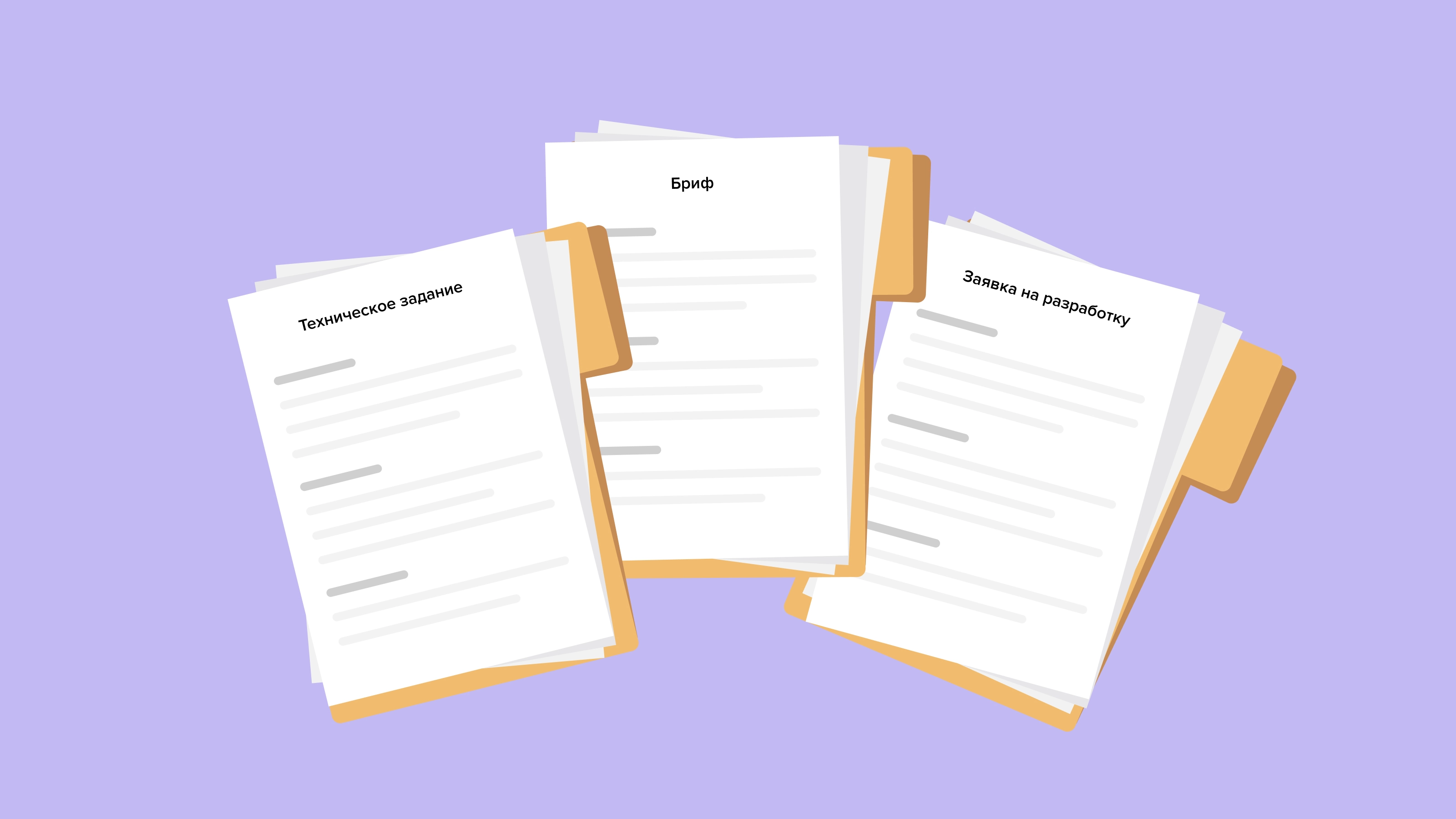Заявка на разработку — это не техзадание
Как грамотно ее составить, и почему это важно
Заявка на разработку — это документ, в котором заказчик на языке своего бизнеса описывает проект, его функции и задачи. Иногда он называется «бриф на разработку».

В заявке достаточно указать минимум данных: контакты, краткое описание проекта и ориентировочный бюджет. Это уже позволит провести первичный анализ и подготовиться к установочной встрече. С другой стороны, чем больше информации мы получим на входе, тем более предметной будет коммуникация в начале. Общее правило — отправляйте все, что есть по проекту. Это ускорит получение оценки и старт работ.
Петр Сараев, менеджер проектов FriflexТехническое задание — документ с детальным описанием требований к продукту. В нем техническим языком сформулированы ожидания клиента. Документ может составлять как заказчик, так и подрядчик. Некоторые компании документируют переговоры и пишут техническое задание по ним.
В российском законодательстве нет жестких требований к проектной документации, поэтому форма и содержание заявки и технического задания отличаются. Исключениями могут стать компании из госсектора. Они при составлении техзаданий пользуются ГОСТами на разработку ПО.
Как написать заявку на разработку
Указываем услугу. Например, «разработка мобильного приложения». Если у вас есть готовая часть проекта, это стоит упомянуть.
Описываем проект в общих чертах. Иногда достаточно назвать главную функцию, чтобы стало понятно, для чего нужен цифровой продукт. Например, «доставка продуктов». Иногда про проект можно написать целую книгу.
Переходим к деталям. В заявке на разработку не обязательно вдаваться в мелкие подробности, указывать размер push-уведомлений или цвет кнопок. Но будет очень кстати, если вы опишите, какие функции и технические характеристики хотите видеть в своем цифровом продукте.
Рассказываем про ожидания. Поделитесь, каких результатов вы ждете от разработки продукта. Хотите увеличить конверсию в покупку или своевременно информировать посетителей мероприятия об изменениях в расписании? Если вы уже определили ключевые показатели эффективности (KPI), их тоже можно указать сразу.
Показываем примеры. Если у вас есть примеры цифровых продуктов, которые вас вдохновляют, вы можете сразу их показать. Опишите, какие элементы вам нравятся, а какие нет. Так исполнителю будет проще вас понять.
Оставляем контакты. В брифе на разработку лучше указать один-два канала для связи и удобное время для звонка.
Разработка технического задания
Техзадание показывает, насколько клиент и исполнитель правильно поняли друг друга. Чаще всего этот документ составляет разработчик. Заказчику не обязательно обладать глубокими техническими знаниями, а у исполнителя должно быть достаточно экспертизы, чтобы продумать все нюансы. Разработка технического задания включает несколько этапов.

Когда к нам обращается потенциальный клиент, сначала мы собираем полную информацию о его проекте и бизнес-задачах. Чтобы написать техзадание, разбираем большую задачу на крупные верхнеуровневые блоки. Потом обсуждаем задачи с командами: бэкенда, дизайна, фронта, DevOps. Каждая команда оценивает по сложности и времени свою часть работы, уточняет бизнес-требования и технические детали.
На основе этих оценок составляем спецификации — документы, в которых все задачи разделены на крупные этапы. Например, по первой спецификации мы разрабатываем в приложении авторизацию или регистрацию пользователя. По второй — подключаем push-уведомления. По третьей — связываем приложение с системой лояльности. Так клиент видит этапы работы и понимает, из чего складывается общая стоимость проекта. Легко ориентируется в сроках и связанных или блокирующих задачах.
После согласования с клиентом мы на основе спецификаций переходим к разработке технического задания. В нем детально описываем все этапы работы и учитываем технические детали
Дмитрий Сулыбкин, менеджер проектов FriflexЧто дает техническое задание
Техзадание помогает понять, как технически будут реализованы функции и из чего складывается стоимость работы. Он может сразу увидеть структуру проекта, например, сайта или приложения, узнать, что и как будет работать.
Еще техзадание помогает убедиться в компетентности исполнителя. Оно показывает, что у исполнителя есть опыт, навыки и экспертиза, чтобы выполнить задачи, которые вы с ним обсудили. Если оно неполное, последовательность и горизонт работ лишь смутно угадываются, а риски оценены некорректно, это может говорить о том, что исполнителю недостает опыта или он просто не понимает ваш проект.
Когда проект готов, можно проверить, соответствуют ли функции продукта техзаданию. Если сотрудничество не заладилось, можно с уже готовым техзаданием обратиться к другому подрядчику. Новая команда втянется в проект быстрее с рабочим документом под рукой.
